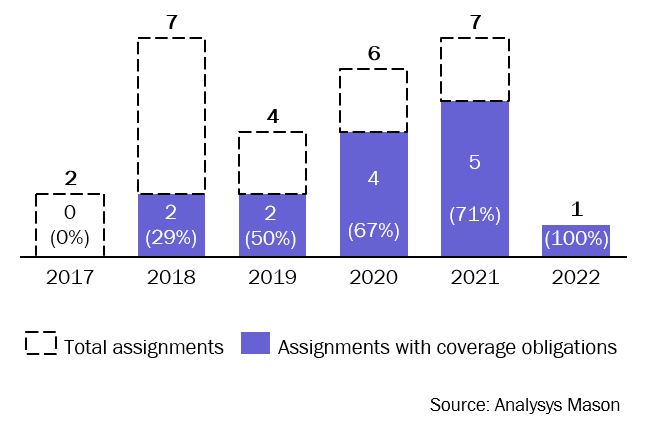We analysed the use of pro-competitive measures within the 3.4–4.2GHz range amongst a benchmark set of OECD countries
Project experience | Spectrum
The problem
- TELUS Canada was concerned about the conditions under which 3.8GHz spectrum may be awarded in Canada, including the potential use of spectrum set-asides, spectrum caps and coverage obligations
- TELUS asked Analysys Mason to compare how spectrum in the 3.4–4.2GHz band has been awarded in 24 high-income countries, which are all members of the Organisation for Economic Cooperation and Development (OECD)
The solution
- We analysed the use of pro-competitive measures within the 3.4–4.2GHz range, including:
- spectrum caps
- spectrum set-asides
- coverage obligations
- Our report concluded that the use of spectrum caps in these frequencies was common, but that setting aside spectrum for particular types of mobile operator was rare
- We also focused on how coverage obligations are generally defined and international lessons that could be applied to the Canadian market, as well as benchmarking prices paid for 3.4–4.2GHz spectrum in the context of the extremely high prices previously paid for the 3.5GHz band in Canada
Figure: Proportion of benchmark spectrum assignments including a coverage obligation or incentive by year

The result
- Our report was published and was used by TELUS as part of its discussions with the national regulatory authority in the context of defining the rules for an upcoming auction of the 3.8GHz band in Canada
For a mobile operator in Canada, we carried out a project to analyse the use of pro-competitive measures, including spectrum caps, spectrum set-asides, and coverage obligations within the 3.4-4.2GHz range amongst a benchmark set of OECD countries

